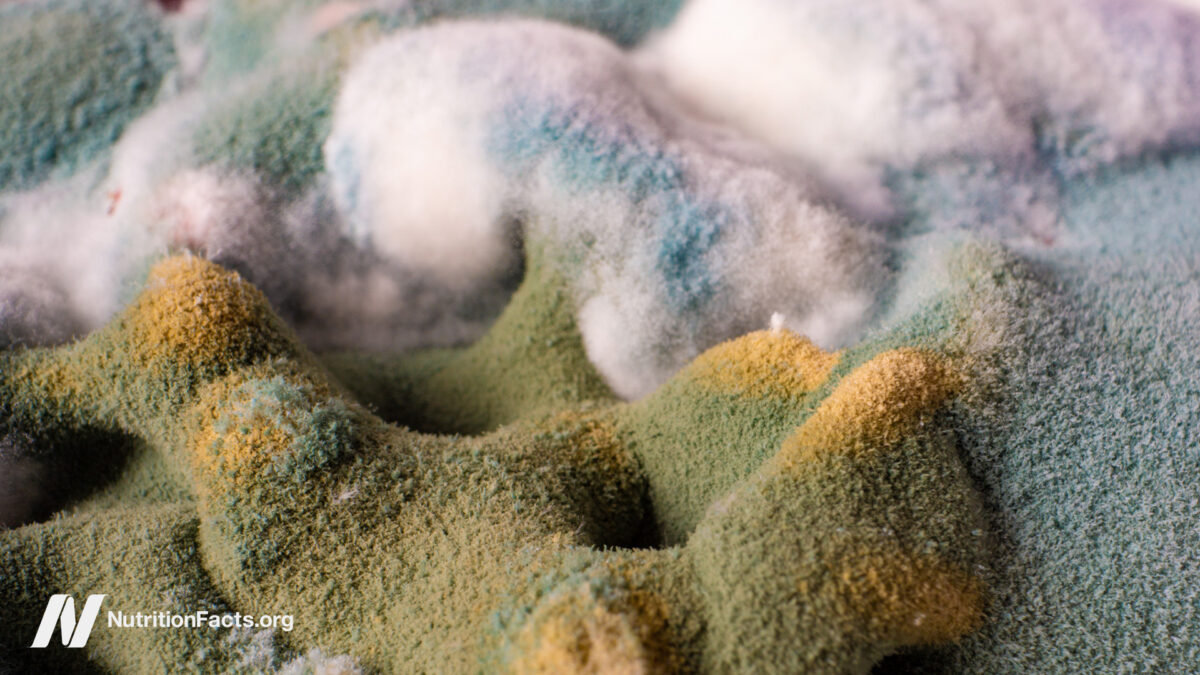How New York’s immigrant communities built a culinary capital, from Little Yemen in the Bronx to Chinatown’s Asian-inspired ice cream
On a 24-hour whirlwind journey, Queenie Shaikh discovers how communities have shaped entire neighbourhoods through corner shops, kitchens, and restaurants that tell the history of one of the greatest cities in the world

‘Lower East Side food tour!’ a man with a yellow umbrella called out, practically shoving a pamphlet into my face as I stumbled out of the subway at Houston Street on 2nd Avenue. The summer air was thick and humid. Crowds spilled out of bars and cafes, and the scents of pastrami, shawarma carts, and — oddly enough — charcoal wafted through the streets. It was my first evening in New York City after a turbulent 8-hour flight from London that had worsened both an emerging headache and hunger pangs, and I was ready to eat my body weight in anything within arm’s reach.
Most visitors to New York City think they know its food scene from films and television, and will find themselves grabbing questionable street cart hot dogs or one of the many dollar pizza slices scattered across the city.
But the reality across NYC is far messier and more compelling. New York is where immigrant communities have shaped entire neighbourhoods through corner shops, cramped kitchens, and restaurants that serve as community centres as much as places to eat. For four centuries, this has been the city’s defining pattern: each new wave of arrivals finding a place to live, building economic footholds through food, and gradually reshaping what it means to be a New Yorker. The Lower East Side, with its layers of Jewish, Latino, and Asian immigration, tells this story as clearly as anywhere — but it's a pattern repeated from Flushing to Brighton Beach to Queens.
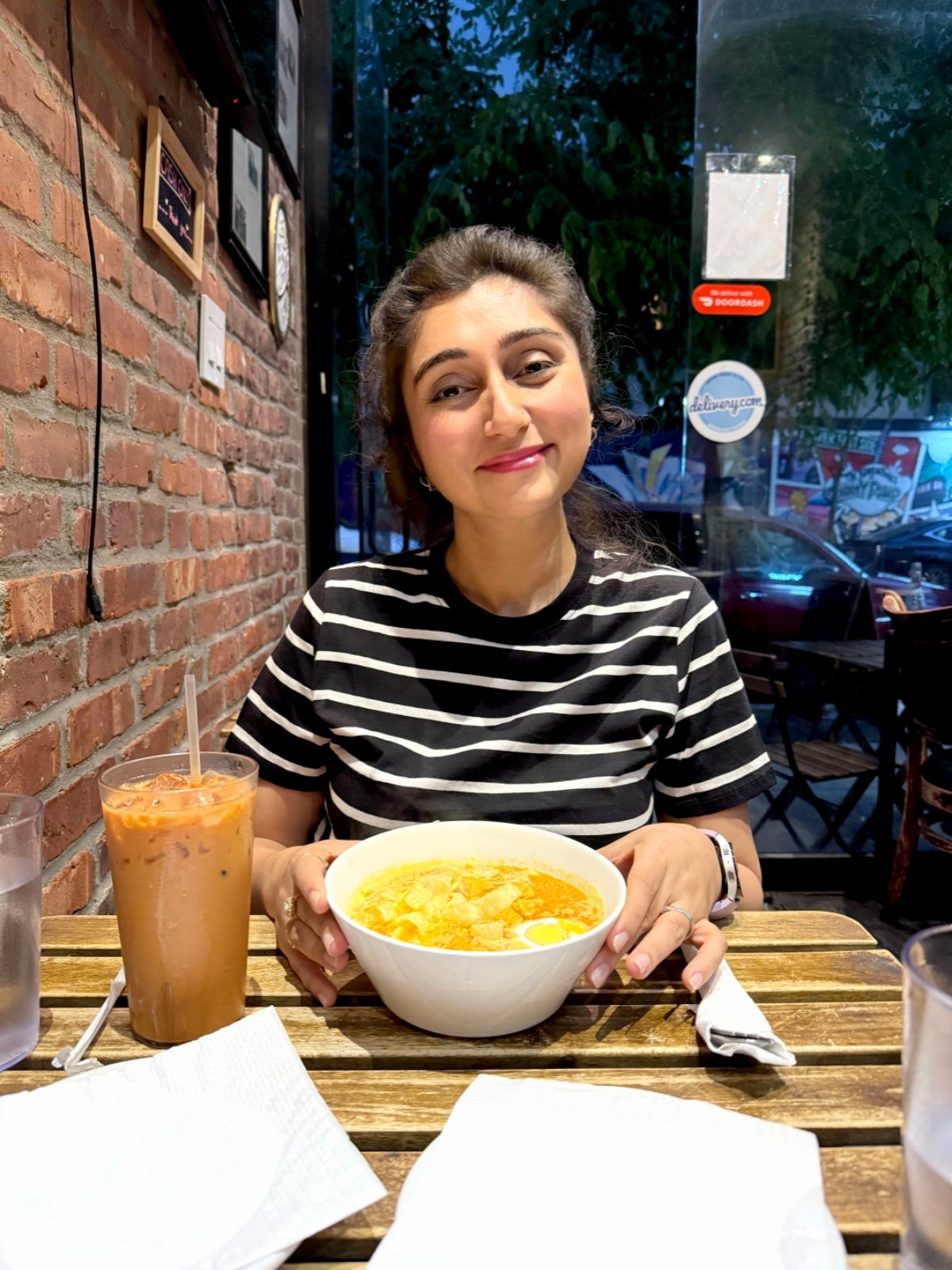
The aim of my trip was to explore New York City’s decades of immigration history, shaped through its food. And with the city having just reached its 400th birthday, it felt like the perfect time to pay homage to New York’s culinary heritage.
My first stop was Little Myanmar in the East Village, a restaurant specialising in Burmese cuisine, where I caught up with a local New Yorker friend. The place was stacked with rickety tables and mismatched chairs, and a curtain separated the kitchen from the rest of the restaurant. Despite its modest size, the place was packed, which I took as a good sign. I flipped through the menu, featuring a range of tea leaf salads, shrimp curries, and Burmese soups. We decided on two servings of ohn no khauk swe, a rich noodle soup made with chicken or vegetables and coconut, served with an optional egg or fish cake, and paired them with Yangon milk tea.
Read more: Affordable places to stay in New York
A small community of Burmese immigrants arrived in the US in the 1960s and 70s, following the 1962 coup and the subsequent anti-Chinese riots. However, it wasn’t until the mid-2000s, coinciding with the peak of resettlement efforts for Burmese refugees, that a significant influx of Burmese immigrants — particularly from the Karen ethnic group — began arriving in New York, many of them settling here and on the Lower East Side. They followed the same blueprint written by generations before them: find cheap rent, open a restaurant, serve your community first, and then introduce the broader city to your culinary world.
.jpg)
The food at Little Myanmar may be Burmese, but it’s served in American portions. Our soup arrived in large bowls, with optional red chillies on the side. I twirled my fork into the noodles, coconut, and vegetable broth, took a generous bite, and was instantly transported to Karachi, my ancestral homeland. There, South Asians who had moved to Burma soon after Partition had brought back their own version of ohn no khauk swe, or khow suey, to Pakistan. The milk tea wasn’t overly sweet nor bitter and surprisingly complemented the savoury food perfectly.
With hunger pangs now satiated, we next headed to Chinatown Ice Cream Factory for dessert, a 20-minute walk from the East Village. Ice cream’s origins can be traced back to around 200BC during the Tang Dynasty, though whether ancient China, Persia, or the Middle East invented it remains a subject of intense debate. Inspired by this history, Philip Seid, a Chinese immigrant originally from the city of Taishan, sought to introduce Asian-inspired ice cream flavours to New Yorkers. He opened the original Chinatown Ice Cream Factory branch in 1978, which now offers 30-plus rotating in-house flavours, including pandan, red bean, ube, and durian.
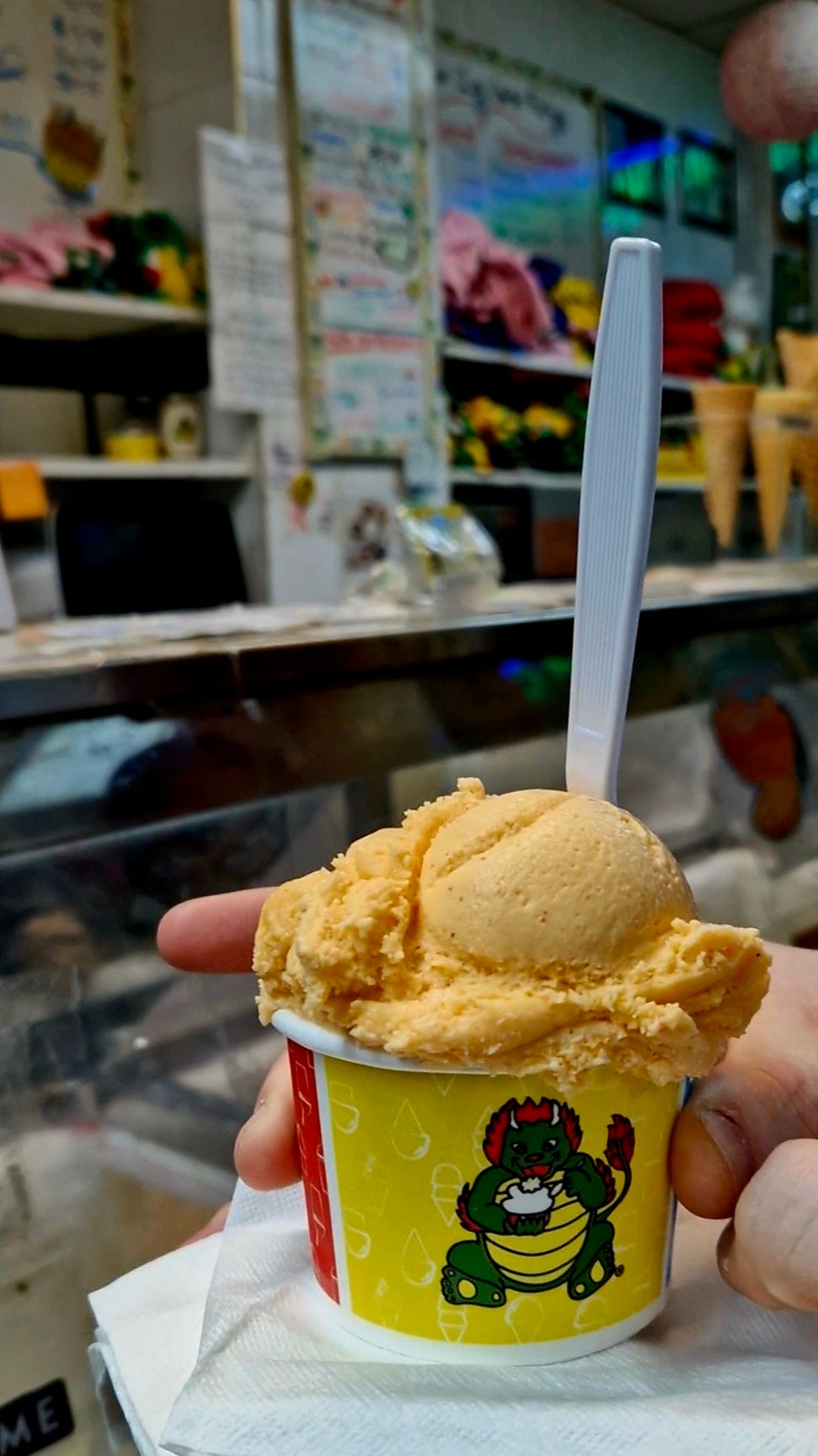
The shop was a long corridor with the counter on one side and a single slab for perching with our ice creams on the other. I ordered a don tot, a light and creamy Chinese egg custard, while my friend opted for a Thai iced tea-flavoured ice cream. At $8.50 a scoop, these weren’t cheap treats – but they were worth the price.
Outside, Chinatown and Little Italy were buzzing with people enjoying the long summer evening. On one side, restaurants serving soup dumplings lined the street, while trattorias filled the other. If I hadn’t known any better, the Chinese and Italian flags hanging overhead would have convinced me I was in either, or perhaps both, countries.
The next morning, my food exploration took me an hour outside of Manhattan to the Bronx, home of the New York Yankees. Not far from Yankee Stadium, the New York Botanical Garden offers a stunning greenhouse with rainforest and cactus displays. While these may be the area's most famous attractions, the Bronx is also home to Little Yemen, an ethnic enclave in the borough's eastern half. Recent migrations to the Bronx, largely driven by the North Yemen Civil War (1962-1970) and the ongoing Yemeni Civil War (2014-present), have led to a significant growth in the Yemeni community. Today, over 500 Yemeni-owned businesses, primarily delicatessens and grocery stores, thrive within a one-mile radius.
Read more: On the culinary trail through Mississippi
I made my way to Azal Restaurant and Hall on Morris Park Avenue, known for its traditional Yemeni lamb dishes. However, the restaurant also offers a vegetarian menu at a fraction of the price of its Manhattan counterparts. Chairs were draped in bright red cloth, each with a glittery golden bow, while a hookah sat beside each table. I flipped through the breakfast section of the menu and ordered fatta with gashta and honey — toast served with honey and mustard seeds as an appetiser, followed by fasoolia Yemeni — white kidney beans with onions, tomatoes, minced scallions, garlic, and cumin, served with warm clay oven bread as my main course. "Happiness on a plate" might be a clichéd expression for some, but it’s definitely how I’d describe my experience at Azal.
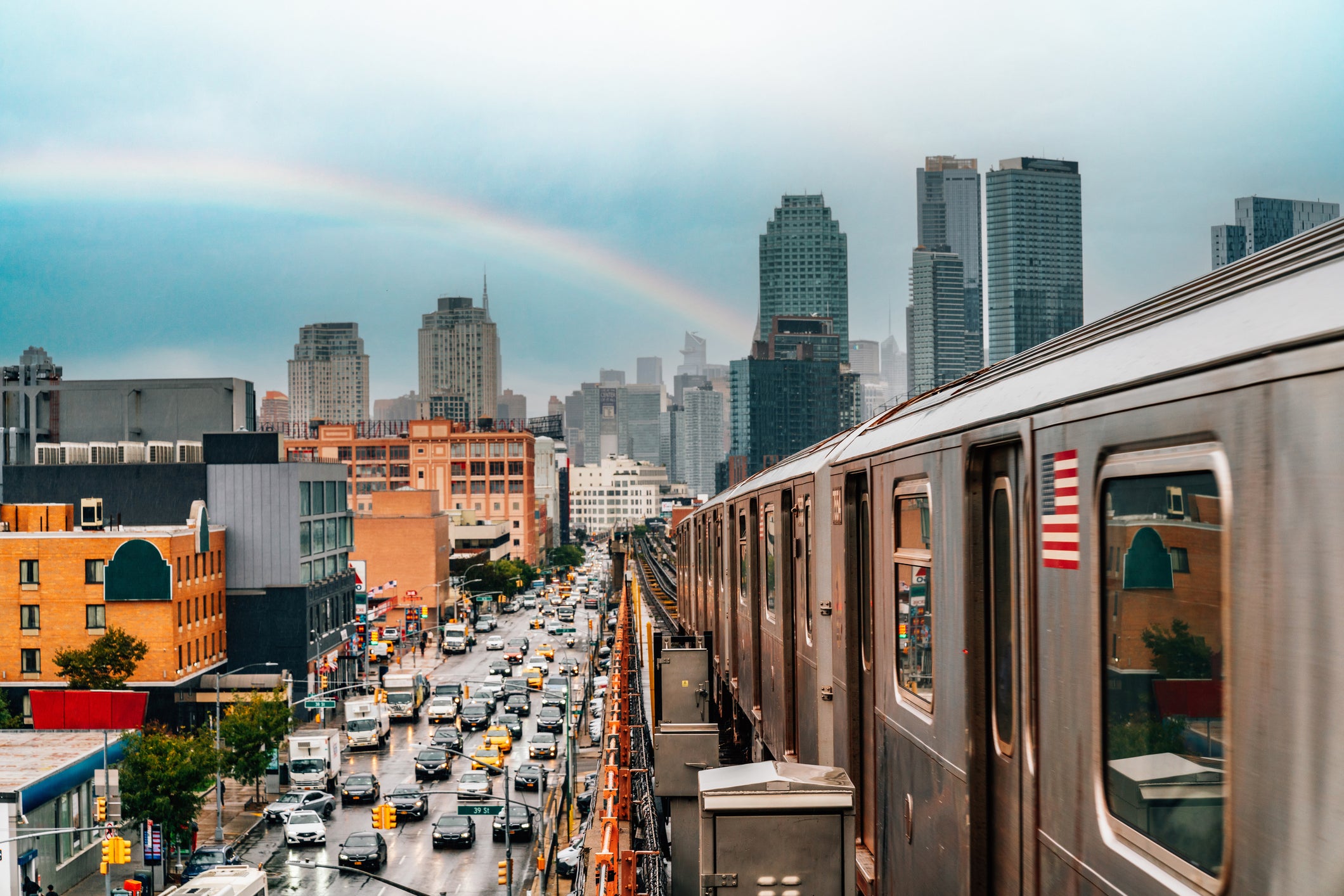
It was a Saturday, and by the time I left, people were rolling in for brunch and lunch as servers brought out heaps of bread and cups of qahwa (Arabic coffee). Outside, the streets were alive with storefronts showcasing Middle Eastern clothing, jewellery, and Bint al-Sahn, the traditional Yemeni honey cake.
Even though I felt full to bursting, no food-related experience in NYC is complete without a detour to Jackson Heights. After nearly an hour on the subway, I arrived at Roosevelt Avenue in Queens, one of the most ethnically diverse neighbourhoods in the world and the gateway to Jackson Heights. With over 180,000 residents and more than 160 languages spoken, Roosevelt Avenue is a slice of the human experience within a 20 block radius. From Little Colombia to Little India, hawkers sold spices, the scent of fresh naan drifted through the air, and stalls were piled high with exotic fruits from every corner of the world.
I headed for a late lunch to meet more local friends at Nepali Bhanchha Ghar located on Jackson Heights’ “Nepali Junction”, a Nepalese restaurant famed for its momos. Known as the Momo Queen of Queens, it has proudly won the Jackson Heights Momo Crawl for three consecutive years.
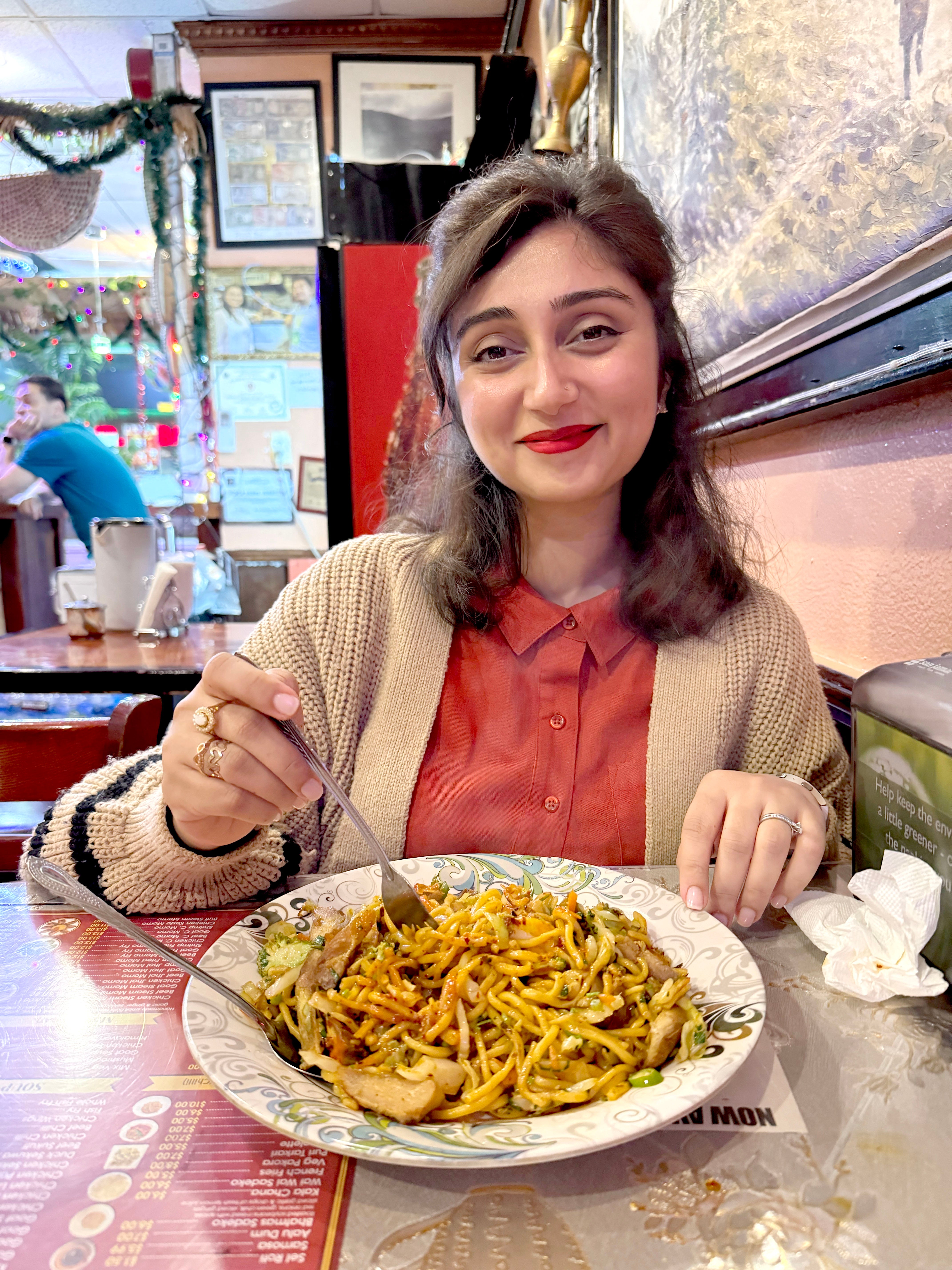
South Asians began arriving in Jackson Heights following the 1965 Immigration and Nationality Act, which opened the door for increased immigration from India, Pakistan, Bangladesh, Nepal, Tibet, and Bhutan. Today, there are more than 20 Nepalese restaurants, along with Nepalese-run boutiques, beauty salons, clothing stores, and other businesses in the area.
Literally translated as “Nepali home cooking,” Nepali Bhanchha Ghar was lined with framed photos of famous diners, Kathmandu, and Mount Everest. Today, the menu has expanded beyond the beloved momos to include barbecue, thalis, samay baji (Nepalese bento boxes), and a wide variety of chowmein. My friends and I ordered a mix of potato and vegetable momos, sukuti samay baji (homemade beef or goat jerky), chicken and vegetarian chowmein, and bhatmas sadeko, a marinated soybean salad.
Struggling to maintain a coherent conversation between mouthfuls of what was probably the best vegetarian chowmein of my life, I reflected on how in less than 24 hours I had travelled between four countries and regions in NYC. As a Londoner, I’m no stranger to multiculturalism, but in New York, it’s different. Here, entire neighbourhoods are built around the traditions of specific communities who have truly made them their home. The pattern I had traced from the Lower East Side to Queens wasn’t just about food, but instead was about how a city gets built by its residents.
These areas are not just places to eat; they are living testimonies to how food in NYC embodies the stories, struggles, and histories of immigrant communities, shaping and constantly redefining the city's identity. After four centuries, New York remains what it has always been: not just a melting pot, but a vast network of kitchens where everyone is contributing to one shared cookbook, one recipe at a time.
Read more: Does NYC live up to the hype of millennial TV shows?

 Hollif
Hollif 
























